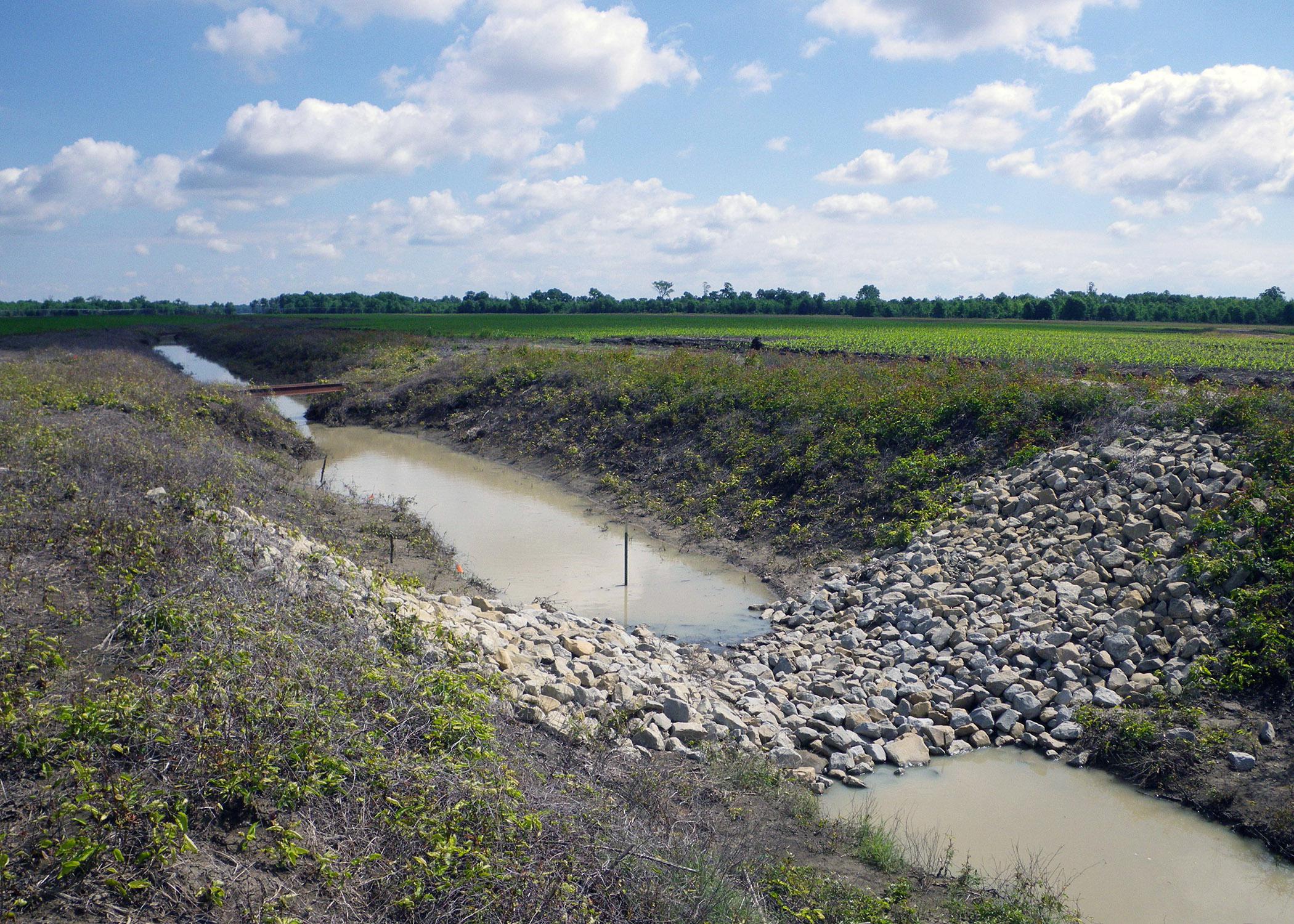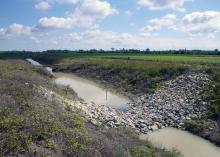Information Possibly Outdated
The information presented on this page was originally released on April 17, 2014. It may not be outdated, but please search our site for more current information. If you plan to quote or reference this information in a publication, please check with the Extension specialist or author before proceeding.
State's water resources need care, conservation
By Beth Poganski
MSU Extension Service
MISSISSIPPI STATE -- Mississippi might not have been ranked the healthiest or the wealthiest state in 2013, but if there were a ranking for water resources, Mississippi would be near the top of the list.
Several factors place Mississippi in the very fortunate situation of having what much of the world does not: water.
Mississippi borders the Gulf of Mexico, which produced $247 million in sales impacts in recent years. It also borders the third longest river in North America, which has deposited rich alluvial soils in the Delta region, supporting a $7.51 billion industry. And Mississippi gets an average of 58 inches of rain each year.
The Environmental Protection Agency reported that at least 36 states currently anticipate local, regional, or statewide water shortages in the near future. Globally, 1.1 billion people continue to live without safe drinking water, but the problem stretches far beyond water. River basins that are shared between two or more countries or states can lead to transboundary tensions, increasing regional instability. Even the U.S. is not immune to interstate strife from shared, but limited, water resources.
Mississippi’s own Delta region is one area that is already under intense agricultural pressure, resulting in heavy use of water resources. In the Mississippi Delta, irrigation accounts for 98 percent of water use from the Mississippi alluvial aquifer.
Additionally, agriculture production practices may impact water quality as a source of surface and groundwater pollution. With the global population projected to grow by two to three billion people over the next 40 years, the demand for water for domestic use, coupled with the demand to produce enough food and fiber to sustain the growing population, is only going to increase.
To meet the demand for increased global food production, producers have been forced to apply fertilizers at increasing rates over the last 50 years. This trend isn’t likely to change. When storm events occur, sediment, nutrients and pesticides are washed from the fields to downstream water bodies. This residue accumulates throughout the Mississippi River Basin from Minnesota to Louisiana and is released into the Gulf of Mexico.
But agriculture is not the sole culprit. Homeowners also contribute to water quality degradation when fertilizers wash away from lawns and leaked oil from cars washes away from driveways.
Nutrient pollution threatens the health of aquatic ecosystems, such as streams, lakes and wetlands. These polluted sources flow into the Mississippi River, creating the annual hypoxic zone -- an area where nutrients stimulate microbial growth that consumes dissolved oxygen in the water -- in the Gulf of Mexico. This hypoxic zone often is the site of massive fish kills, threatening aquatic habitats as well as the coastal fisheries and tourism industries.
Just because Mississippi has abundant water resources doesn’t mean we get a pass for unlimited use. Luckily, through conservation efforts and moving towards intelligent water use designs, we can make our agriculture industry more efficient and sustainable and secure water resources for domestic use.
To increase production efficiencies and help the environment, producers need to marry conservation efforts with production efforts. This translates into capturing and re-using more rainwater, pulling less from existing surface and groundwater sources, and knowing when and how much to irrigate.
Holding excess rainwater -- even for a few days -- in a ditch or retention pond, allows microbes to break down some of the pollutants so the water can then be reused. If water is captured and reused throughout the year, producers can increase the sustainability of their operations and substantially mitigate the downstream impact of their farming practices. Even if you’re a homeowner who only needs to irrigate your lawn or small garden, you can still use these conservation concepts of water reuse, just on a smaller scale.
History shows that when users feel ownership over a resource, they are more likely to promote stewardship and see the benefits from conservation. We need to continue working toward more sustainable water systems, investigate innovative ways for us to conserve water resources, and reduce our impacts on water quality. Mississippi State University Extension, along with state and private agencies, is working to promote conservation and protect our water resources through research, assistance and education.
For more information on water resources in Mississippi, please visit
http://www.reach.msstate.edu/ or http://www.fwrc.msstate.edu/water.
Contact Beth Poganski with any questions at bpoganski@cfr.msstate.edu.

Editor’s Note: Extension Outdoors is a column authored by several different experts in the Mississippi State University Extension Service.







